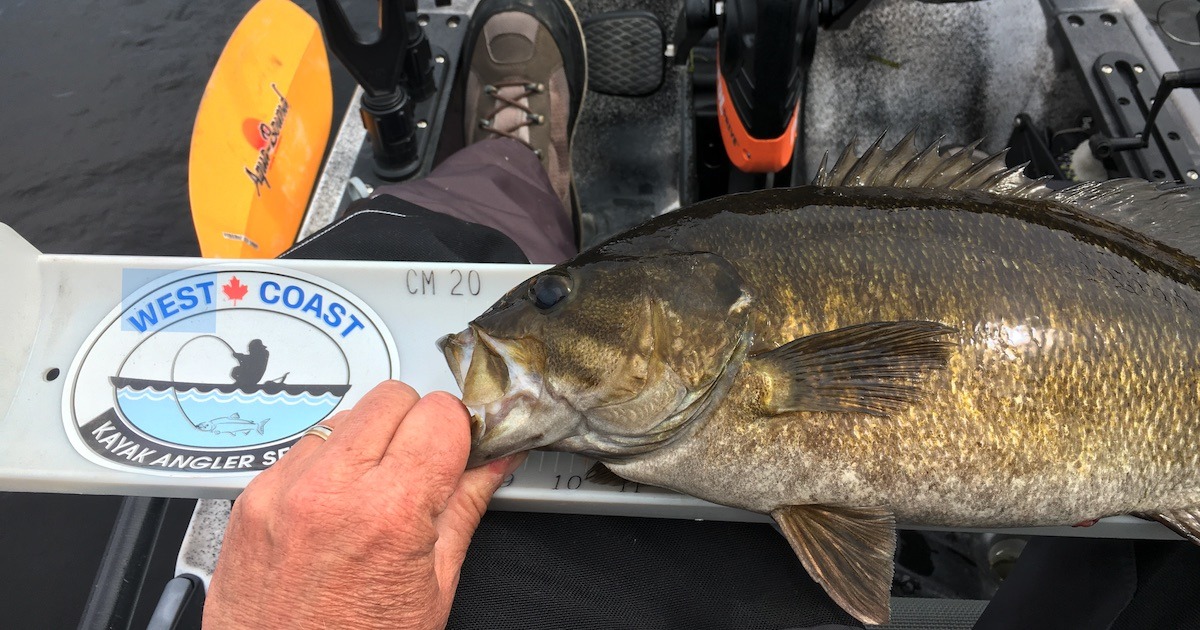
Having grown up in the lower mainland, I’m a traditional salmon and trout guy. Not until we spent three years in the southern states were we exposed to regularly fishing warm-water species including prolific freshwater smallmouth and largemouth bass. But why am I talking about bass in the winter?
Many local traditionalists (including myself at times) might say “bah humbug” to bass fishing, and conventional wisdom says that it’s an invasive species to BC. In fact, bass were introduced to the lakes of Vancouver Island as early as 1901 and continued to be introduced through the 1940s. So in reality, they have coexisted with our trout for longer than most of us have lived.
Where are Bass on Vancouver Island?
Bass can be found as far north as Spider Lake (Qualicum) and increase in abundance the farther south you go. Favorites for avid bass fisherman include Quennell (Nanaimo), Thetis, Elk, Beaver (all in Victoria), and a host of others.
In all, there are more than 17 lakes on the south island that support active bass populations. Check out some of the Facebook groups like Vancouver Island Bass Fishing and the Canadian Bass Fishing League sites for additional information.
For many, winter is the time to clean up and prepare gear for the next season. But we diehard anglers are always looking for reasons to get out on the water, and bass should be one of those. Like most freshwater species, bass’ metabolism slows over the winter.
Figure 1 below is a good starting point, as it provides general guidance on bass activity level and feeding habits relative to water temperature.
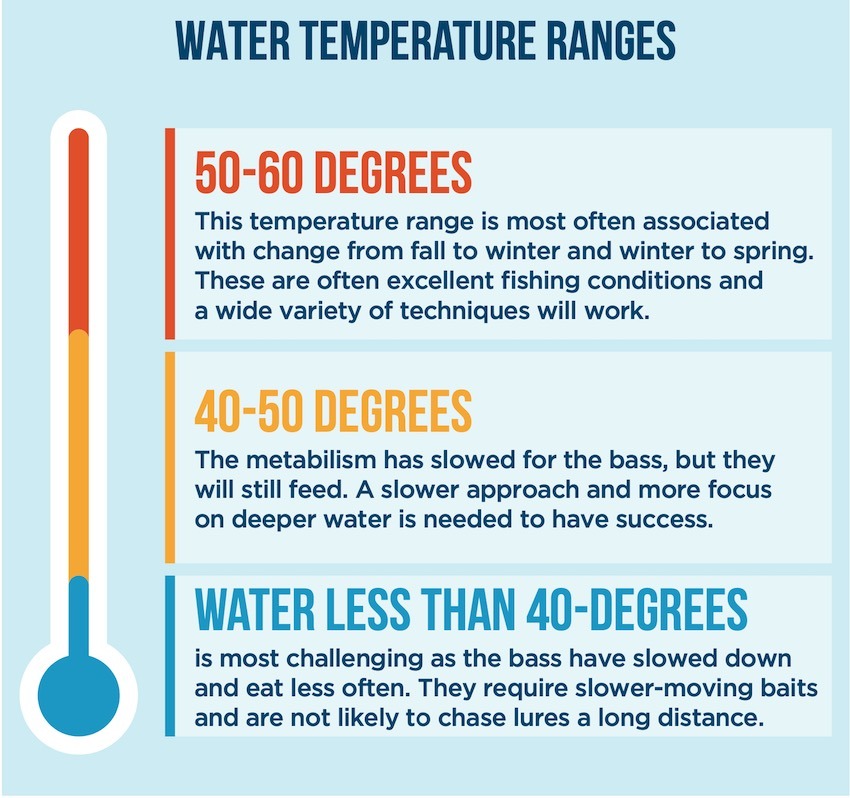
Figure 1: Water Temperature and Bass Fishing
How to Find Bass in a Lake
So where do we find bass? When most people think bass, they get an image of those amazing video shots of the fish “smashing” the bait on the surface. Good luck with that in the winter. Bass’ metabolism slows and they limit movement to retain energy. Just like us fishermen in our winter recliners, they don’t want to move very far for their food, don’t want to have to move fast to get it, and tend to feed more at first light and last light (although sunny days providing some increased warmth can stimulate feeding).
Just like our saltwater friends, bass will congregate where the food and baitfish are. Look for bottom structures or ledges/drop offs (Figure 2) as your primary location, and where possible away from shady shorelines. In spring/ summer bass fishing, we fish the shallows and the “weeds.” In winter, by comparison, bathymetric maps, sounders, or GPS on your boat or kayak will serve you well and improve success. As a general rule, if you find the feed, you find the fish. This process generally requires more patience and exploration to discover where they are staging. The rewards are well worth it.
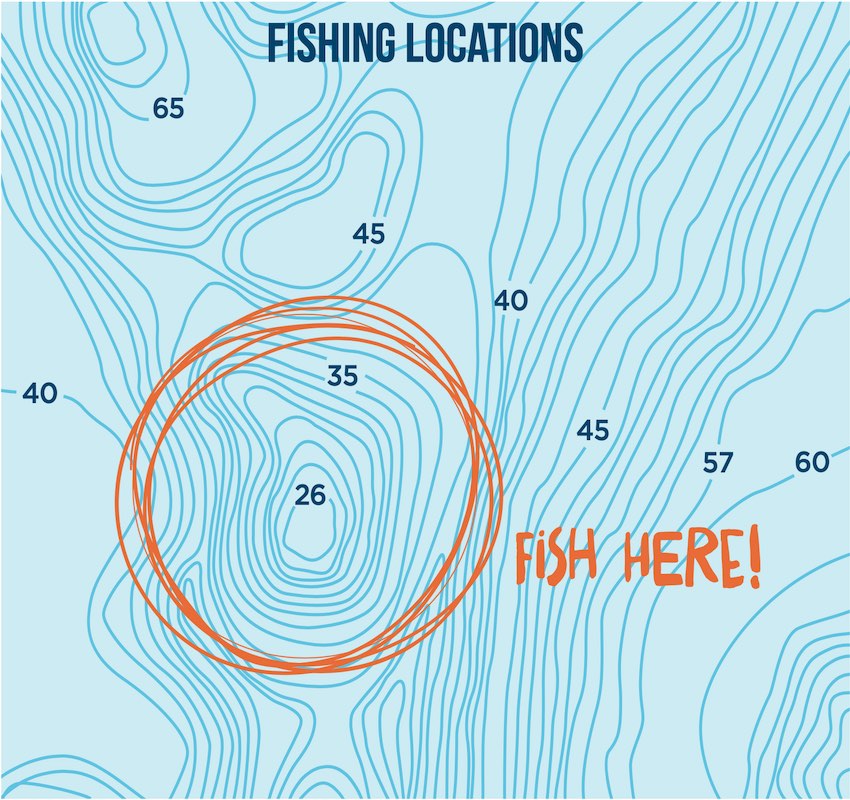
Figure 2: Locating Winter Bass
Bass Tackle and Bass Tactics
Now that we have found the fish, what gear and strategies should we use to get them in the boat? Well, sit down and take a deep breath. If you thought your tackle box was pretty complete, go out and buy a half-dozen new tackle trays, as we are going to fill them up. First off, you can use some of your trout gear and you will have some hook ups, but there is no other fishery like bass fishing in terms of researching bait/tackle options. I would call it Bass U.
Tackle for Bass
Generally, we can break tackle in to six categories:
- soft plastics
- spinnerbaits
- crankbaits
- chatterbaits
- jigs
- topwater lures
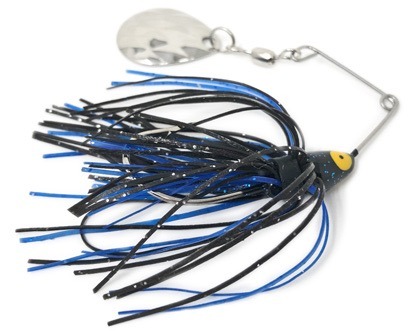
Strike King Mini-King Spinnerbait
You need to align your tackle with the season, and in winter you won’t have to buy topwaters, crankbaits or chatterbaits (all generally fast-retrieve surface options). Primary winter tackle should be soft plastics (worms), jigs, and small spinners.
They are couple of bass-style jigs that can be effective for slow jigging off the bottom or to cover larger areas using a slow troll stop-and-go technique. The most effective category in all seasons remains the use of soft plastic— worms, terrestrials, crawfish, and just about any other incarnation of something soft that wiggles.
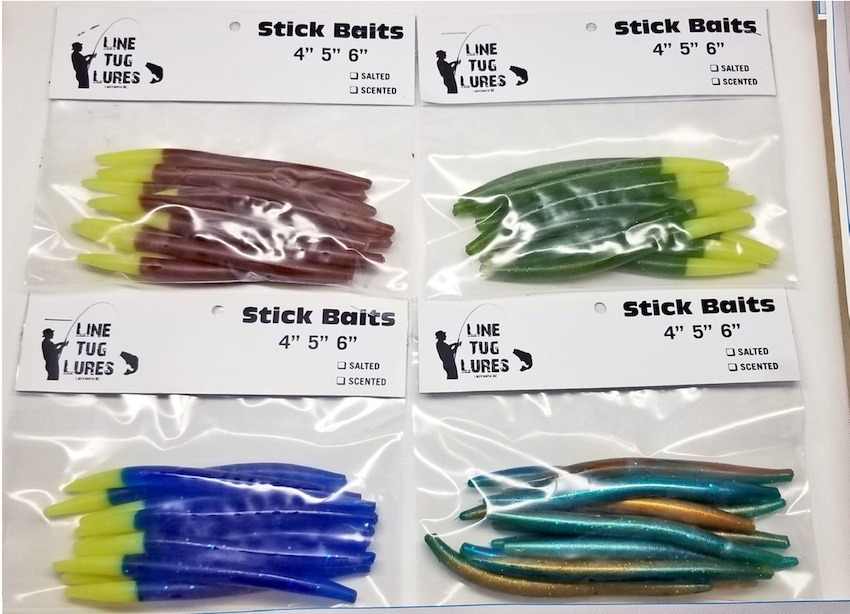
Line Tug Lures Stick Baits (Soft Plastic)
Rigs for Bass
You’ve got lots of choices for your rig—drop shot rig, ned rig, wacky rig, Carolina rig, the weightless rig, the rico, and the list goes on. Each of these rigs represents a form of weighting your lure to reach the target depth and then creating action on the soft plastic that entices the bass to strike the bait. One key consideration is the lake bottom topography. For those lakes that have sand or gravel bottoms, any rig will work. For those that have stumps or heavy cover, consider the “weedless” versions to prevent undesirable snags of underwater branches or cover.
Each of these rigs represents a form of weighting your lure to reach the target depth and then creating action on the soft plastic that entices the bass to strike the bait. One key consideration is the lake bottom topography. For those lakes that have sand or gravel bottoms, any rig will work. For those that have stumps or heavy cover, consider the “weedless” versions to prevent undesirable snags of underwater branches or cover.
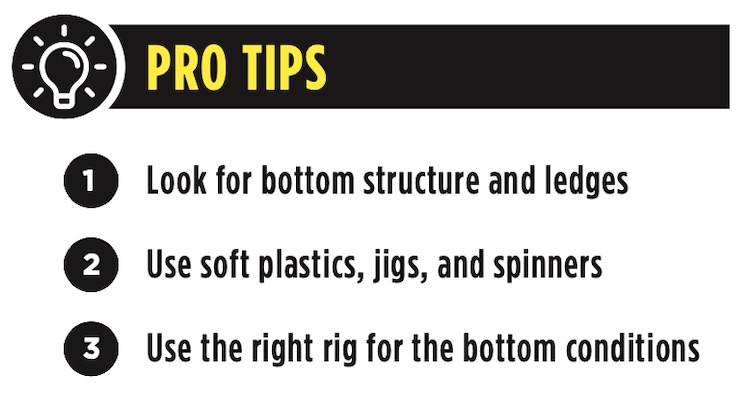
In winter months, when the fish are more lethargic, the type of soft plastic is less important than getting your tackle down to the fish and keeping it in the zone. For colour, a good standard rule is dark colours on overcast days and bright colors on sunny days. In terms of presentation, bass prefer a well-structured PowerPoint with full explanation … just making sure you read this far. In all seriousness, generally drop and twitch, raise a few turns, and repeat. If you haven’t hooked up, slow troll to your next spot and drop, twitch, repeat. Remember, with the fish’s slow winter metabolism, takes are often very subtle, so set the hook on any small bump and be patient.
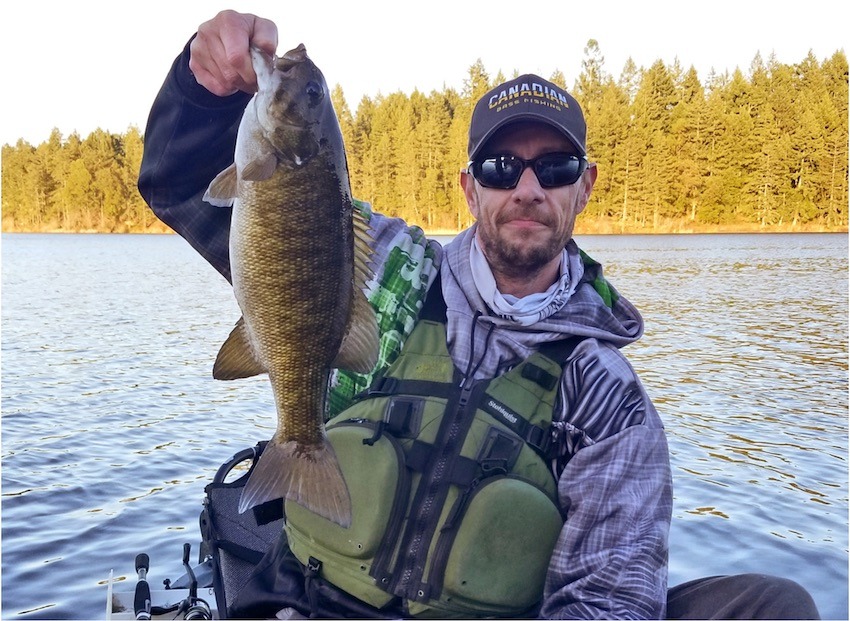
Dave Pedersen with a Winter Vancouver Island Bass
So now you have a strategy and know what you need for tackle. What about rod and reel? Simple: Go into your garage and find you favorite spinning rod (or baitcaster if you are brave enough) and get ready to hit the lake. As the fish are not in the shallows you will need some form of transport to reach the structures, move about the lake, and find the feed. Since most people have put away their power boats for the season, get out your tinny or jon boat, or use a kayak or canoe. No matter your choice, ensure you layer up and dress for the conditions.
The bass sector represents one of the biggest growth areas in western Canada, and opportunities abound on the south island. Stay safe and take someone fishing.
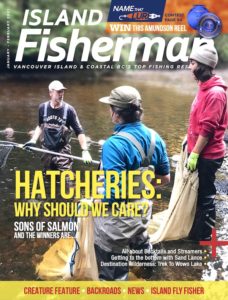 This article appeared in Island Fisherman Magazine. Never miss another issue—subscribe today!
This article appeared in Island Fisherman Magazine. Never miss another issue—subscribe today!
One Comment
Leave A Comment
Visit the Store
$34.99
$34.99
Featured Catch

Joel Unickow halibut (Photo: Rob Frawley Lucky Strike Sportfishing Tofino)








Great article! I am curious, how does Canadian bass fishing stack up against United States bass fishing? Here in the States, places like Texas and Florida which are the farthest South tend to have the best bass fishing. So I am curious how the fishing is so far North.